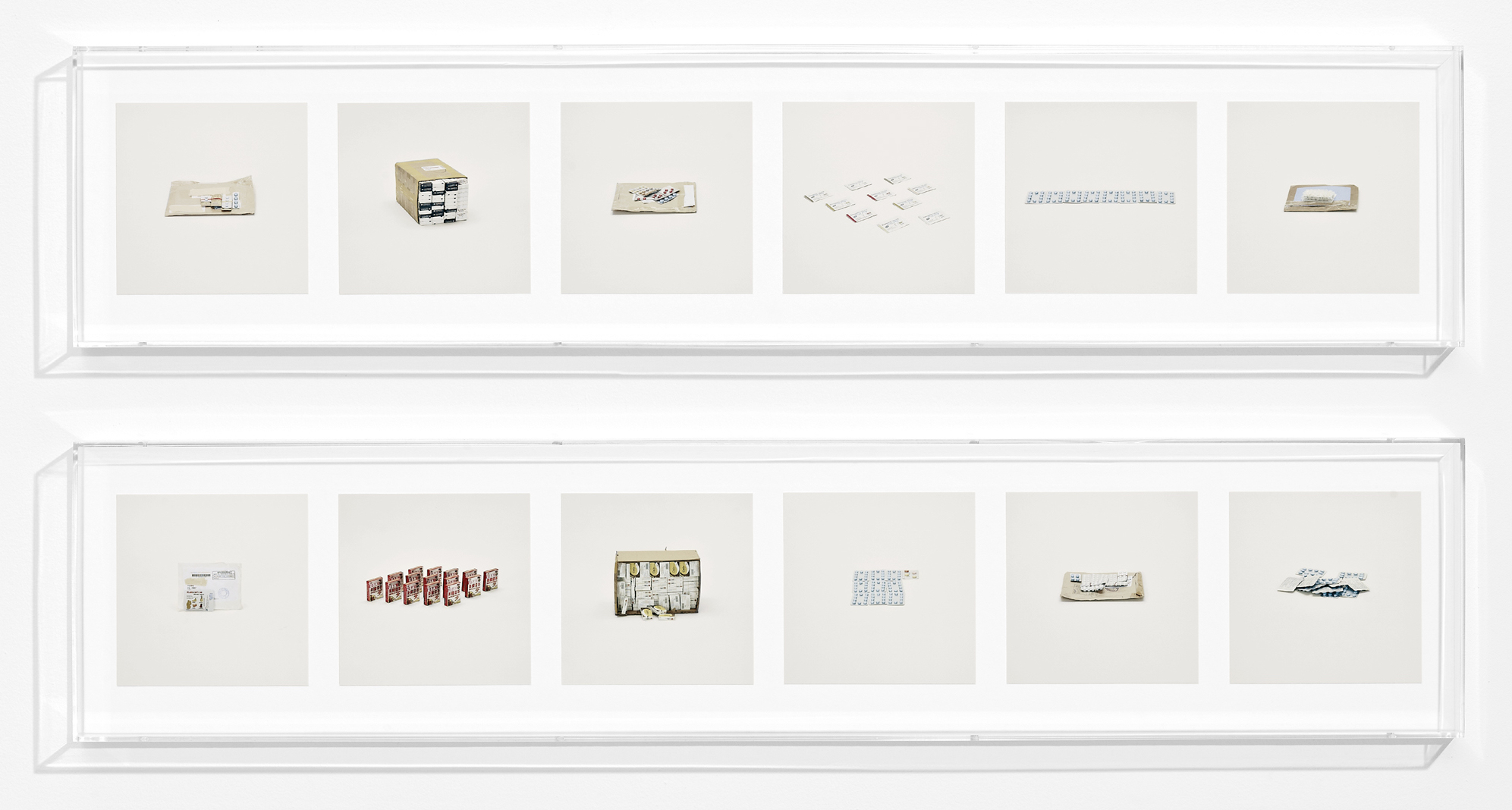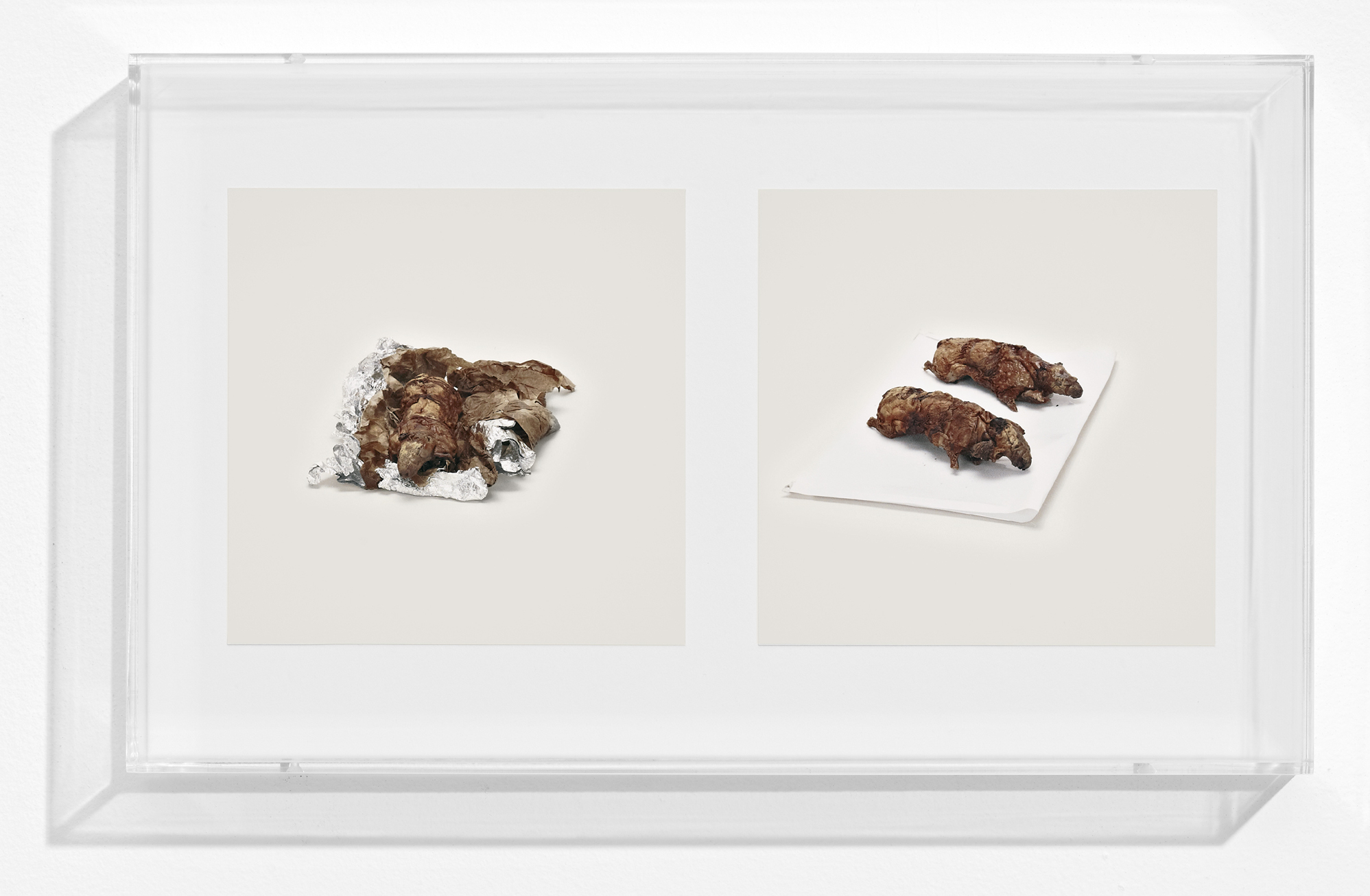
Whether travelling for business or leisure, the experience of going through airport security can be a stressful one at the best of times. The pressure is on as the queues move slowly past the sniffer dogs, bags placed on the rolling conveyor belts for scanning before they head through the metal detectors. For those with something to hide, one mistake can mean that it’s all over. Taryn Simon explores these high stakes in the photo series Contraband, completed during a five-day stay at John F Kennedy international airport, New York from 16 November to 20 November, 2009. During this intensive period, she was able to photograph over 1000 items, which had been either detained or seized from passengers, or discovered in express mail entering the United States from abroad.
Counterfeit clothes and designer accessories, pharmaceuticals, jewellery, drugs, Cuban cigars, animal parts, pirated DVDs, gold dust, steroids and even cow-manure tooth powder all feature in her stark images, which were shot using a labour-intensive, forensic photographic procedure. Each item is set against an off-white background, a miniature studio of sorts, which allows for all the creases and intricate details of each object to be unforgivingly illuminated. That these forbidden items are revealed so completely in this painstaking process is knowingly reflective of their status as contraband; once hidden, they are now brought into the light.
- BRANDING, TIFFANY & CO. (COUNTERFEIT), BRANDING, MISC. (COUNTERFEIT), 2010
- SAUSAGES (PROHIBITED), 2010
“Each item is set against an off-white background, which allows for all the creases and intricate details of each object to be unforgivingly illuminated”
Simon’s images reveal as much about the breadth and range of the prohibitions enforced by the United States as they do about the ingenuity of those who seek to contravene these rules. Items are wrapped thickly in sellotape, or hidden within multiple containers like an illicit Russian doll. Simon turns her photographer’s gaze to these cleverly concealed packages, often carefully arranging them in symmetrical compositions that are disconcertingly pleasing to the eye. Pills, guns and edible goods are shown amidst their wrapping, opened up to reveal the secrets inside for the camera. In doing so, she highlights the thin line between evasion and detection; for all these illegal items that were caught and confiscated, how many others made it through unscathed?
There are 1075 photographs in Contraband, a remarkable number when you consider the fact that Simon spent just five days at the airport. Such a vast spread of information demands categorization, and Simon made the decision to order her images alphabetically. It offers an arbitrary and yet useful sequence to the series, and allows for multiple examples of the same item—such as sausages—to be grouped together. These groupings create miniature typologies within the wider series, drawing attention to the points of convergence amongst these unique, forbidden objects, and highlighting patterns even within the wildly diverse array.


“For all these illegal items that were caught and confiscated, how many others made it through unscathed?”
The result is an inventory that, while meticulously detailed, gives little away about the laborious process of production behind it. Simon had trouble sleeping while immersed in the disorientating airport environment, where day and night blur into one under the artificial lights, and she showered just once during her time there. Meanwhile, her photographs remove each item from their owner, leaving us to only imagine the circumstances in which, say, deer penis came to pass through airport security. In doing so, they speak to a broader, shadowy network of import and export, whereby goods travel all over the world in cross-crossing pathways—often without detection.
Contraband paint a portrait of post-9/11 America, where the battle lines between law enforcement and criminal activity have been amplified and entrenched. The series captures a cross-section of this underground activity, leaving as much unspoken as it reveals. Like the illegal items that she documents, Simon does not give up her secrets easily, even when they are hidden in plain sight.
All images © Taryn Simon. Courtesy Gagosian







